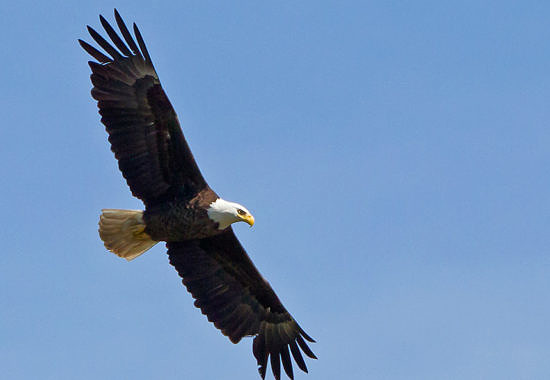Bryan's Posts About Birds

Spring Migration: The Surge Begins
The Black-billed Cuckoo beat its caterpillars senseless this morning before swallowing them whole. The Scarlet Tanagers sang for us in full-frontal view. And an Eastern Bluebird warbled from the top of a white pine. Another morning of spring migration.

Why the American Robin is a Badass Bird
Hardly denizens of the suburban front lawns, American Robins conquer territory with a blend of moxie and manifest destiny, kind of like another American species we know all too well.

Merlins: Murder, Mayhem and Magnificence Now Flying Near You
Like a cross between a cruise missile and a T-Rex, they are flying and killing machines. For more than a week, particularly here in Montpelier, they’ve been flying and killing over Vermont. And at this moment, most of you are probably not too far from a Merlin. Here’s how to find one.

Bald Eagle (and Dead Fish) Alert
Get yourself to the fertile intersection of ice and water (and dead fish) here in Vermont. You’ll probably find Bald Eagles, maybe lots of them. During this time of thaw, eagles sometimes gather where water meets ice in Vermont’s Champlain Lowlands (and elsewhere). I’ve got map to guide you.

A Blackpoll Warbler’s Daring Trans-Atlantic Flight
Two wings and a prayer carry a Blackpoll Warbler on a remarkable journey to South America each autumn. Well, actually, two wings and the audacity to pull off one of the most amazing feats of migration on the planet: a non-stop, trans-Atlantic flight lasting up to three days.
After only speculating about this amazing journey for decades, my colleagues at the Vermont Center for Ecostudies today announced the proof. Blackpoll Warblers fitted with miniature tracking devices took off from points in either Nova Scotia or the northeastern U.S. and flew south over the Atlantic, with no safe place to land, until reaching Caribbean islands roughly 1,600 miles away.

A Bobolink’s Carbon Fingerprint
What happens in South America doesn’t stay in South America. Bobolinks now migrating north will unwittingly bring back clues about what they were up to last winter. For the ornithologists working to protect these songbirds, it amounts to “better living through nuclear chemistry” — and better conservation as well.

Bryan Goes Bohemian
Okay, Bohemian Waxwings don’t really wear black berets and black turtlenecks. Nope, they don’t sit in cafes reading Allen Ginsberg’s Howl. But they are free spirits, wanderers now visiting the fruits of our flowering crab apples and other ornamental trees. I discussed them on Vermont Public Radio. You can listen.

We Hope To See You (Fully Clothed) Friday in Montpelier
Ruth and I look forward to seeing folks in Montpelier this Friday night for our contribution to the North Branch Nature Center’s Naturalist Journeys lecture series.

A Super Bowl Superb Owl (and What’s This? No. 23 Revealed)
Ten years ago tomorrow, on February 2, 2005, I photographed this Great Gray Owl near Montreal, Quebec. It’s your Super Bowl Superb Owl for 2015. We also have a winner and an explanation in my latest What’s This? nature challenge.

Getting Gulls – Lesson One: Your Neighbors
Gulls are nothing if not resourceful and entertaining (unless you’re a southern right whale or a White-crowned Sparrow over Lake Erie). So, with our rainbow warblers long gone for the tropics, and with the vernal serenade still months away, you gotta get with gulls. Here’s your first lesson.

The Crazy Stuff Birds Eat
For many of us who watch their behavior, birds are what they eat — or at least are predictable in their diets: Kingfishers catch fish. Hummingbirds drink nectar. Robins eat earthworms. Flycatchers catch flies. Except when they don’t.

A Pre-Blizzard Snow Storm (of Geese)
Before the snow falls here in the Northeast, I offer you video of a blizzard of Snow Geese and Ross’s Geese taking off at Bosque del Apache National Wildlife Refuge in central New Mexico earlier this month.
